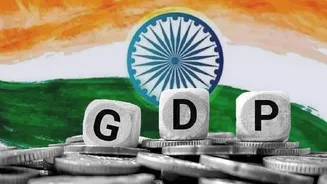Inflation Target: The Core
At the heart of India's monetary policy lies the inflation target, a vital anchor guiding the Reserve Bank of India (RBI). This target helps shape expectations,
bringing greater predictability to the economy. The current framework involves setting a specific inflation goal, which is a crucial component for fostering price stability. This stability, in turn, is essential for sustainable economic growth and for encouraging investment and consumer spending. The RBI is mandated to keep inflation within a specific range, ensuring it remains at a level that supports economic expansion without fueling excessive price increases. This approach is intended to strike a delicate balance, achieving price stability while also supporting the country's economic objectives and ensuring that the financial markets function effectively. Maintaining this specific target is an ongoing challenge that involves careful monitoring of various economic indicators and proactive measures to anticipate and address inflationary pressures.
Point or Band Debate?
The discussion often revolves around whether to focus on a point target or to allow for an inflation band. A point target gives a precise number to aim for, which can be seen as straightforward. It provides a clear message to the public and financial markets. However, some argue that a point target can be too rigid, creating unnecessary pressure on the RBI to meet the target precisely at all times. This rigidity could prompt abrupt policy changes, potentially destabilizing the economy. Alternatively, an inflation band, which provides a range, offers more flexibility. It allows the RBI more leeway to respond to unexpected economic shocks. This approach acknowledges the inherent uncertainty in economic forecasting and allows for some fluctuation in inflation without triggering panic. The band approach also potentially reduces the risk of the RBI overreacting to minor inflationary deviations. Determining the optimal approach involves balancing the benefits of clarity and control with the need for flexibility and adaptability.
Headline vs. Core Inflation
Distinguishing between headline and core inflation is another key consideration. Headline inflation represents the total increase in prices of a basket of goods and services, including volatile components such as food and energy. Core inflation, on the other hand, excludes these volatile items, providing a clearer picture of underlying price trends. The inclusion of food and energy prices means headline inflation can be subject to external factors, such as global commodity prices and seasonal variations. These factors may have a temporary impact on inflation without reflecting any broad-based inflationary pressures in the economy. Core inflation gives policymakers a clearer signal about the sustainability of price increases, allowing them to make better informed decisions about monetary policy. Focusing on core inflation helps to avoid reacting to transient price changes that might lead to unnecessary policy adjustments. The selection of which measure to focus on, headline or core, requires careful consideration of the specific economic context and potential sources of inflationary pressure.
Is 4% Appropriate?
A core question for the RBI revolves around the suitability of the current 4% inflation target. Several factors influence this assessment, including the overall economic growth outlook, prevailing global conditions, and the structural dynamics of the Indian economy. The 4% target, with a tolerance band, was set to balance price stability with the need to support economic growth. However, economic conditions evolve, and the target must be reassessed to ensure it remains relevant. Some argue that a slightly higher target might allow for faster economic growth, particularly if the economy is operating below its potential. Others emphasize the need to prioritize price stability, believing that it is the cornerstone of sustainable growth. The decision on the appropriate target must consider factors like the potential impact on consumer behavior, investment decisions, and financial market stability. Periodic review and adjustment of the target is essential to maintain its effectiveness and to keep pace with changing economic realities. This ensures that the policy framework remains aligned with the needs and objectives of the Indian economy.
Beyond The Four Questions
The discussion about India's monetary policy extends beyond the four key questions discussed. The current framework must be seen in a broader context, taking into account the evolution of financial markets, the increasing integration of the Indian economy with the global economy, and the changing landscape of economic policy. The RBI must continue to adapt its approach to keep pace with these shifts. This necessitates continuous evaluation of the tools and strategies used to manage inflation, alongside the need to refine communication strategies. Open communication with the public and financial markets is vital for maintaining credibility and ensuring that the monetary policy framework remains effective. Furthermore, the role of the RBI goes beyond simply managing inflation; it also involves contributing to financial stability, promoting economic growth, and supporting the development of a well-functioning financial system. This comprehensive approach is designed to foster a resilient and prosperous Indian economy.
















